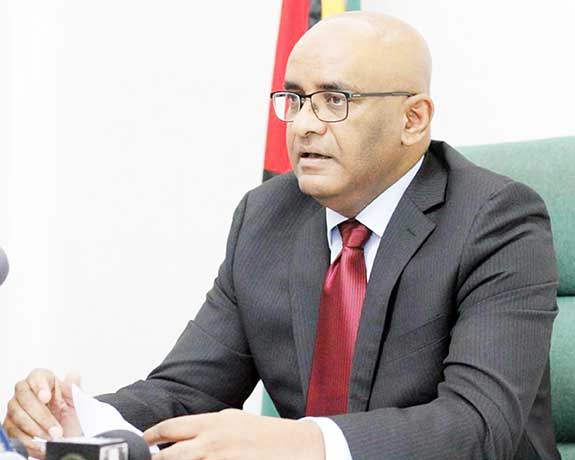Gas-to-shore pipeline can be paid for in 5 years – VP
…industrial manufacturing from gas positive externality
, Source - https://www.inewsguyana.com/ga...d-for-in-5-years-vp/
The gas-to-shore pipeline being pursued by the People’s Progressive Party (PPP) Government and which it is estimated will cost some US$900 million to build, can be fully paid off or amortised within five years.
This view was expressed by Vice President Bharrat Jagdeo, during a recent presentation with senior representatives of various media houses. He noted that given the millions that will be saved in energy cost per year when the gas-to-shore pipeline is functional, the project can be paid for within five years.
“There is an agreement between the parties, that this suits the country best. Because if we can save $150 million a year and that’s the outer limit, in five years we can pay back for this pipeline,” he explained.
“Because I think it’s the outer limit, it’s inflated when you go to tender. In five years from savings alone we can amortise the whole investment,” Jagdeo further explained to the media houses that were gathered.
Before the PPP entered office, a number of studies on the gas-to-shore project had been done under the former A Partnership for National Unity/Alliance For Change (APNU/AFC) Government.

These studies include the Gas to Power Feasibility Assessment in Guyana by K&M Advisors, an Oil and Gas Master plan by Japan Cooperation Centre Petroleum Chiyoda Corporation, a Study on System Expansion of the Generation System by Brugman SAS and a Desk Study of the Options, Cost, Economics, Impacts, and Key Considerations of Transporting and Utilizing Natural Gas from Offshore Guyana for the Generation of Electricity (2017) by Energy Narrative.
Now, however, the Government is in the process of conducting several studies including geophysical, geotechnical, lidar and environmental impact studies. According to the Vice President, these studies should be completed by next year.
“For the project to happen, to even start designing the things you will bid on, you have to do additional studies. That is the studies being done now, which will be completed next year. It’s only when those studies are done then we can design the pipeline, the power plant and stuff like that and then go out to tender. It’s not like we’re going out to tender next week,” he said.
The gas-to-shore project is a game-changing initiative that will see gas from the Liza Field offshore Guyana being pumped onshore to generate power. The main objective of the initiative is to transport sufficient gas from the Stabroek Block’s petroleum operations to supply some 200-250 megawatts of energy to the national grid, leading to a significant reduction in electricity costs.
President Dr Irfaan Ali had previously said the gas-to-shore pipeline, which will land at Crane on the West Coast of Demerara (WCD), would lead to “big industrial development taking place there that is linked to not only power generation and a power plant.” He also said the investment on the Demerara River’s shoreside would create massive opportunities and a trickle-down effect.
Soon after the Government issued permit licences to Exxon for the Payara Development Project last year, Jagdeo had announced that the Government would turn its attention to negotiating the gas-to-energy project.
A number of factors including geotechnical, geophysical and environmental were examined before Vice President Jagdeo announced recently that the Government had settled on Wales to land the pipelines for the project.
Meanwhile, Prime Minister Mark Phillips, who has responsibility for the energy sector, has previously said that the Government is looking to produce 200 megawatts of power from the gas-to-shore project by 2024.
Exxon has said that around 30 to 35 million cubic feet of natural gas would be required for the gas-to-shore project. Recently-released data from Norwegian research company Rystad Energy had indicated that less than 20 per cent of the 1.8 billion Barrels of Oil Equivalent (BOE) discovered last year was gas.



